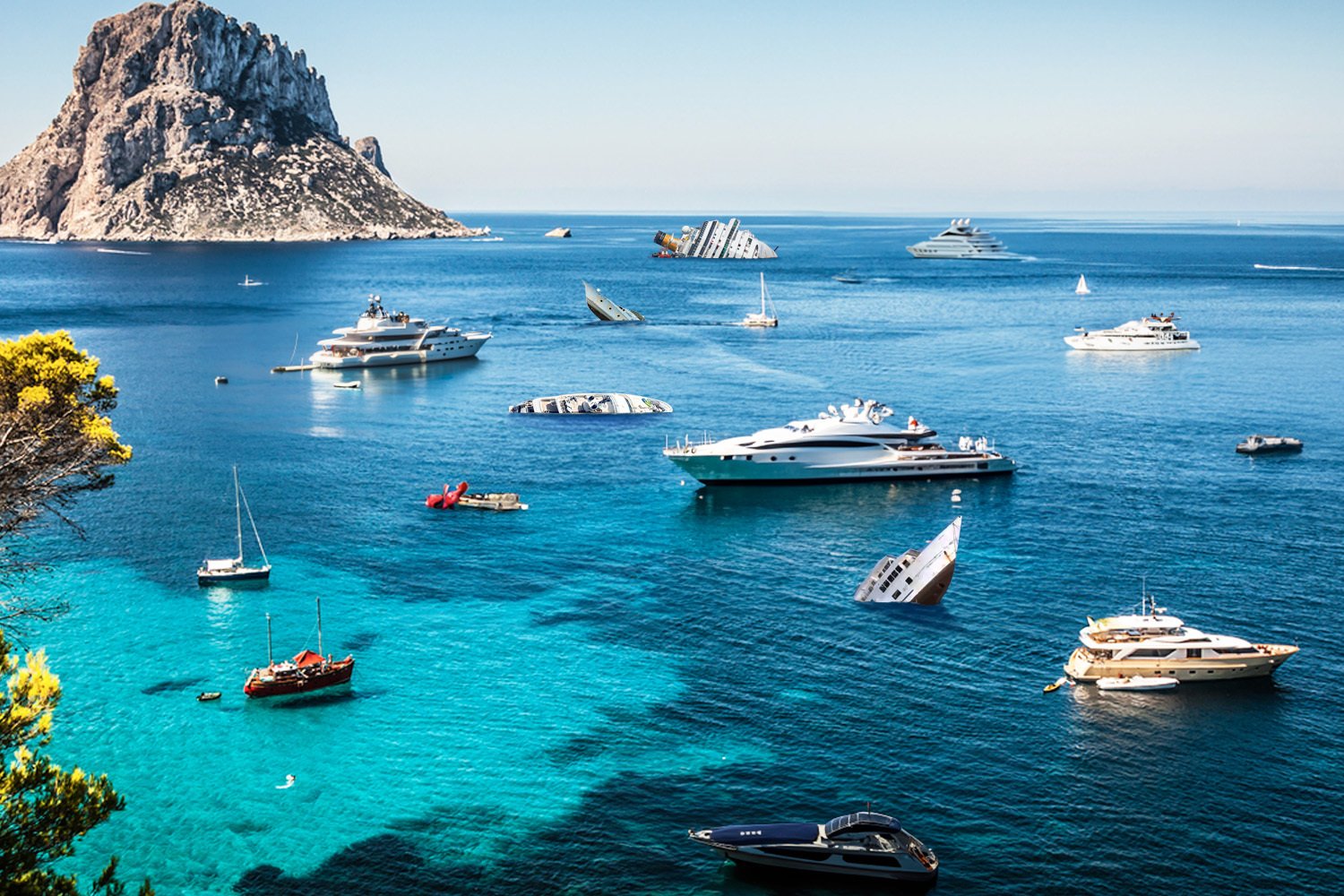The Mediterranean is becoming increasingly dangerous to sail in, as evidenced by a series of distressing incidents, including the recent catastrophic sinking of the 184-foot yacht Bayesian off the Italian coast, which resulted in at least six fatalities, including tech mogul Mike Lynch. This tragedy has deeply shaken the yachting community and raised serious concerns about the safety of these majestic vessels in what was once considered a summer haven.
RELATED: A strange link between the sunk Bayesian yacht and the hit show Below Deck
A Pattern of Perils
The incident with the Bayesian is just the latest in a series of misfortunes to have befallen the azure waters of the Medeittrenean. Only a week before, a 120-foot yacht, Wally Love, was driven aground near La Savina, Formentera, a Spanish island, in the wake of a fierce thunderstorm. And on August 10, the 154-foot Heesen yacht Atina succumbed to flames in the Bay of Olbia, Sardinia, eventually sinking after a massive blaze onboard took hold.
The pattern of misfortune extends beyond this summer.
In August 2023, the 90ft motor yacht Irmao caught fire and sunk off Formentera, while March this year saw the 87ft Ferretti motor yacht Gemini crash into the breakwater in Eceabat Marina, Çanakkale, as she negotiated the treacherous Dardanelles Strait.
The summer of 2022 proved equally dangerous for luxury vessels. August brought the 147-foot ISA motor yacht Aria SF to a fire that eventually saw her sink off the coast of Cap Martinet, Ibiza. July saw the 68-foot vessel smash into the rocks of Sardinia’s shore, with a British life taken and six others injured. A similar disaster befell the 120-foot Pesa, a newly launched yacht that caught fire in Valencia’s port, in April, just two years after its maiden voyage.
https://www.facebook.com/reel/380771965044132
Even classic yachts are not immune to these maritime tragedies. In August 2022, it was the turn of Libra Y, 138 feet long and launched in 1977, which caught fire while berthed in a marina in Piraeus, Greece.
These recurring incidents in the summer months underline the Mediterranean as a hotbed for superyacht accidents, prompting the question: why are these luxury vessels facing such hazards?
Climate Change: A Possible Culprit?
Climate change has emerged as a prime suspect in these maritime incidents, with scientists pointing to freakish and increasingly dangerous weather patterns driven by warming waters in the Mediterranean.

Luca Mercalli, president of the Italian Meteorological Society, describes the severity of this warming trend. He points out that water temperatures around Sicily, where the Bayesian sunk, have reached approximately 30 degrees Celsius (86 degrees Fahrenheit), approximately 3 degrees Celsius (5.4 degrees Fahrenheit) above the seasonal average.
These temperatures are some of the highest recorded in ambient water on the planet and can be a factor leading to phenomena such as storms and waterspouts.
Research supports this theory. AS 2022 study examining 234 waterspouts in the Spanish Mediterranean over three decades found that they were more likely to occur when sea surface temperatures were above 23 degrees Celsius (73 degrees Fahrenheit).
Although the International Panel on Climate Change has not created any definite link between climate change and waterspouts, they have indicated that conditions for their formation are increasing in frequency.
Peter Inness, a meteorologist at the University of Reading, explained to CNN, “Global warming — and specifically warming of the Mediterranean Sea — is quite likely to lead to an intensification of a number of potentially dangerous weather systems in that region.”
Giuliano Gallo, a former skipper who has crossed the Atlantic and authored several books on sailing, said that the Mediterranean is becoming more like the Caribbean, which has areas that many boats avoid at certain times of the year.
Despite concerns about warmer waters in the Mediterranean during the summer months, the yachting community should not be deterred from exploring these enticing seas.
However, this indicates the necessity for increased vigilance and stringent safety measures, ensuring that all navigational and safety protocols—from GPS accuracy to comprehensive emergency procedures—are rigorously maintained.
With these precautions firmly in place, yacht enthusiasts can confidently enjoy the enchanting allure of Mediterranean voyages while safeguarding the well-being of passengers and crew.
How superyachts catch fire… accident or suspicious?

Many fires find their starting point in very ordinary sources that could happen to any ship: defective electrical systems, overloaded circuits, carelessly thrown-out cigarettes, defective fuel lines, and faulty gas-fired boilers. These major problem complexes sometimes prove to be the Achilles’ heel of these floating luxury palaces.
However, some cases point to more unusual circumstances. In August 2023, while docked in the Livorno shipyard in Italy, the 183-foot superyacht project FB261 caught fire. Some speculated this may have resulted from a lightning strike or that the electrical protection systems of the new build were not activated.
Repair and maintenance yards hold some of the most serious risks, as this cautionary tale from Chula Vista, USA, attests. A $17 million, 31-meter yacht went up in flames during what was meant to be routine repairs, with the suspected culprit being: A welding torch that sparked an inferno, sending two to the hospital for carbon monoxide inhalation.
While most incidents appear to be accidental, a notable exception occurred in March 2022. Ukrainian engineer Taras Ostapchuk was taken into custody after attempting to sink the 450-foot superyacht Lady Anastasia. His motive was a protest against the Russian invasion of Ukraine, as the yacht belonged to Alexander Mikheev, a Russian billionaire.
Some more yachts have sunk or caught fire in the past few years.
- Lady MM (August 2020) caught fire and sank approximately 50 nautical miles east of Sardinia, Italy.
- My Saga (August 2019): Sank off the coast of southern Italy after being battered by a storm.
- Angra (September 2015): Caught fire in Naples, Italy.
- Ocean 5 (July 2015): Burned and sank in Greece.
